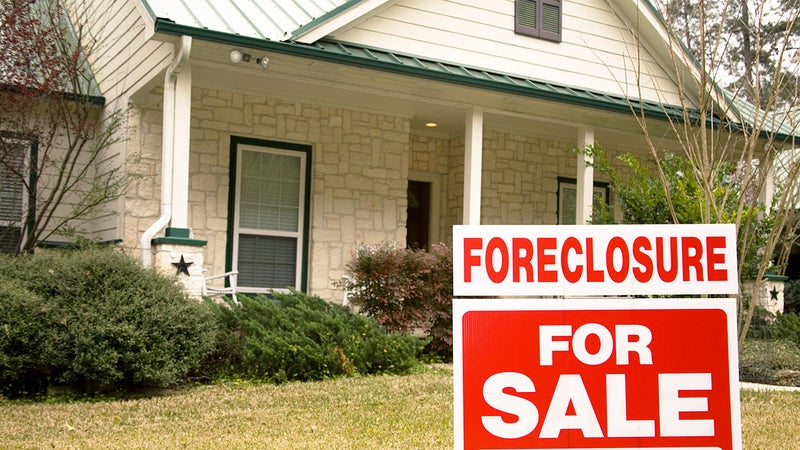Mortgage forbearance: What is it and how does it work?

The Bankrate promise
At Bankrate we strive to help you make smarter financial decisions. While we adhere to strict , this post may contain references to products from our partners. Here's an explanation for .
Key takeaways
- Mortgage forbearance allows homeowners to pause or reduce mortgage payments during a short-term financial setback.
- Mortgage forbearance is not automatic, even in emergency situations. If you stop making payments, your credit will suffer.
- Under normal circumstances, you must provide proof of financial hardship in order to be eligible for forbearance.
Going into mortgage forbearance might seem daunting for homeowners facing unexpected hardship, but it’s really meant to be a lifeline in those exact situations. Understanding the basics of this type of mortgage relief might help alleviate some of the worry.
What is mortgage forbearance?
Mortgage forbearance is an option that allows borrowers to pause or lower their mortgage payments while dealing with a short-term crisis, such as a job loss, illness or other financial setback. This can help protect struggling borrowers from becoming delinquent with payments, as well as avoid foreclosure.
Keep in mind: Whatever your reason for needing forbearance, it's extremely important to talk to your lender or servicer before you stop making payments.
Find out from your lender or servicer which type of loan you have and what the forbearance terms are. Stopping payments before you’ve officially been granted forbearance could make you delinquent on your mortgage and have a serious negative impact on your credit history.
Who is eligible for mortgage forbearance?
The only way to know if you are eligible for mortgage forbearance is to get in contact with your lender or servicer. Unless you’re in a disaster or emergency situation, be prepared to demonstrate proof of financial hardship and comply with all of your lender’s forbearance requirements.
Effects of forbearance
Does mortgage forbearance affect your credit?
Mortgage forbearance does not show up on your credit report as a negative activity; your lender or servicer will report you as current on your loan even though you’re no longer making payments.
Again: You must be in touch with your lender about going into forbearance. Do not stop making payments until you’ve been officially extended that protection. Stopping payments before you’re in forbearance will seriously harm your credit.
How does mortgage forbearance affect your interest rate?
Mortgage forbearance itself doesn’t usually change the amount of interest you pay on your mortgage and the interest rate for the loan. They remain the same — whatever was stipulated in your original mortgage agreement.
The only situation in which the interest might change is if the lender extends the loan maturity date (which affects your amortization schedule and thus the amount of interest you pay overall) or increases the interest rate, says Andrew Demers, partner and real estate lawyer at Foster Graham Milstein & Calisher in Denver. To get a sense of that and the total costs, Demers points out it’s critical for borrowers to understand the payment terms of the forbearance and ask questions, including:
- Do I have to pay interest or escrow advances during this time, or is this a complete payment deferral?
- Is the loan maturity date being extended?
- Will the lender recapture the deferred payments through a balloon payment at loan maturity, an extended maturity date or some other catch-up method?
Will forbearance affect refinancing?
Yes. If your mortgage is in forbearance, refinancing is typically not allowed.
Depending on the type of mortgage you have, however, there are steps that can be taken to refinance, after your forbearance ends. If you have a Fannie Mae or Freddie Mac-backed mortgage, you will be required to take your mortgage out of forbearance and make three payments before being allowed to refinance. Similarly, if you have an FHA or USDA loan, you must leave the forbearance program and make three consecutive payments before being considered for refinancing. VA loans may be eligible for refinancing if you can show lenders that your financial situation has improved.
How to apply for forbearance
If you’re ready to proceed with seeking mortgage forbearance, you’ll need to take these steps:
- Gather all of the paperwork that helps paint the picture of your specific hardship situation. This might include bank statements, medical bills or a layoff email.
- Contact your mortgage lender or servicer’s loan relief or loss mitigation department. From there, you’ll either need to formally request forbearance, or you’ll be given the opportunity to explore other relief options.
- Keep a record of all communications with your lender, and ensure you get a forbearance agreement in writing before you stop making payments.
Pros and cons of mortgage forbearance

Pros of mortgage forbearance
- Temporarily stops or lowers monthly mortgage payments
- Can help prevent foreclosure, or pause proceedings
- Allows you to still sell the home
- Potential for flexible repayment options

Cons of mortgage forbearance
- Restricts ability to refinance mortgage
- Payments might increase after forbearance period ends
- Might not be an option for rental properties or second homes
What happens when mortgage forbearance ends?
When the forbearance period expires, you’ll be required to repay what you missed. Depending on your lender or servicer, this could happen in one of the following ways:
- Lump-sum payment or reinstatement plan: You’ll repay what you missed in one payment as soon as the forbearance period ends.
- Short-term repayment plan: You’ll repay what you missed over a short-term window, such as six months.
- Deferral: You’ll repay what you missed after the original loan term is up, known as the maturity date. For example, if you have a 15-year mortgage and were in forbearance for six months, you’ll resume making your usual payments for the remainder of that 15-year term, then repay what you missed over six more months.
- Loan modification: Your lender will extend the term of your loan, lower your interest rate or both so that you have a new, more affordable payment.
Mortgage forbearance vs. loan modification
Mortgage forbearance is a temporary solution for those experiencing financial hardship. A loan modification, in contrast, changes the original mortgage terms permanently. A modification does not mean you can stop making payments; rather, it helps lower your payments to make them more manageable, either with a lower principal balance, a lower interest rate, an extension of the repayment term or some combination. You might have to provide documentation proving hardship to be approved for a modification.
Mortgage forbearance FAQ
-
Mortgage forbearance isn’t necessarily a bad idea, as long as you communicate with your lender or servicer and have a plan in place for when the relief period ends. When you can’t afford to pay your mortgage, forbearance gives you a chance to sort out your finances and get back on track. That said, it isn’t a perfect solution and might not make sense for every homeowner, especially if you don’t see your situation improving any time soon.
-
Initial forbearance plans generally last three to six months. You can typically request an extension if you require more time.
-
Yes. You can still make partial payments during forbearance. You’re ultimately responsible for repaying the mortgage and the missed payments; making partial ones helps reduce what you’ll owe when the forbearance expires. Just be sure to keep in close contact with your servicer if you plan to do this.
-
Yes. Even if you’ve missed a few payments, you can apply for mortgage forbearance.
-
If you’re still in your initial forbearance mortgage period, you can ask your servicer for an extension. Some servicers will extend forbearance for as long as 12 months, or in some cases, even longer. You’ll need to speak to the servicer to get approval for a second or extended forbearance period.



